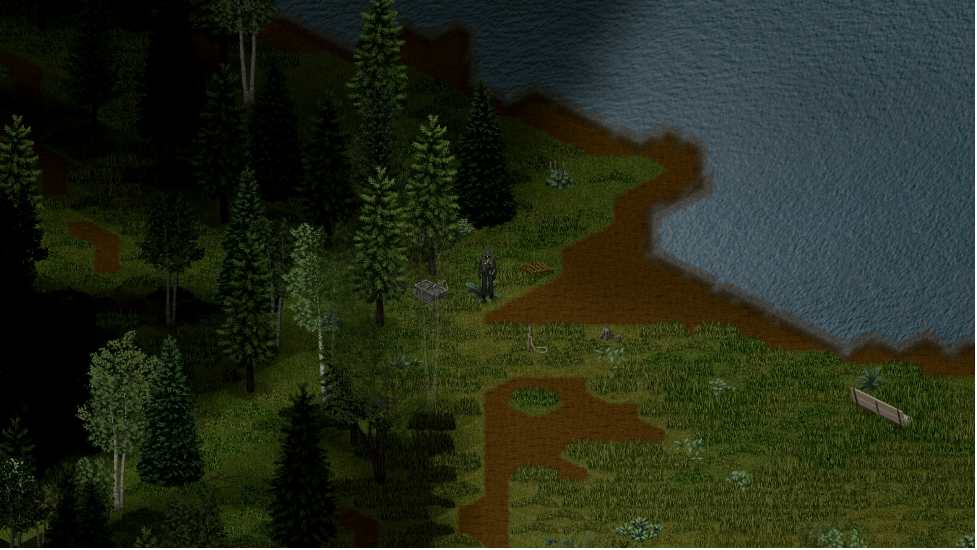
- Last Updated on
In Project Zomboid, trapping is a skill every budding survivor should include in their repertoire. The game can be brutally difficult, pitting you against the dangers of nature and the zombies that now roam it. You’ll face sweltering heat, bitter cold, disease, loneliness, and of course, ex-humans that see you as a walking buffet. In the face of all this danger, sourcing your next meal is easier said than done.
Of course, you could always venture into the dead-filled streets to restock your pantry. Whether you’ll come back with a meal or be someone else’s is up to fate. For a safer approach, you could take to the fields and farm for a steady supply of food. While relatively risk-free, farming takes a fair bit of maintenance and time before you can enjoy the fruits of your labor. A lack of water would mean a lack of food, too.
A good halfway point in Project Zomboid is trapping. It isn’t nearly as risky as an urban excursion, but isn’t as time-consuming as farming. What it does take is skill and know-how. In this guide, I’ll be taking you through Project Zomboid’s trapping, how to raise the skill, and a few tips to keep in mind.
Related: How to Hotwire a Car Project Zomboid
💥 Don't Miss These Latest Deals 💥

- 27 inch QHD (2560*1440) display with the DCI-P3 90% wide color gamut brings what you’re watching to life in over 16.7M colors

- Nvidia ampere streaming multiprocessors
- 2nd generation rt cores:
- 3rd generation tensor cores
Project Zomboid trapping: Crafting your traps
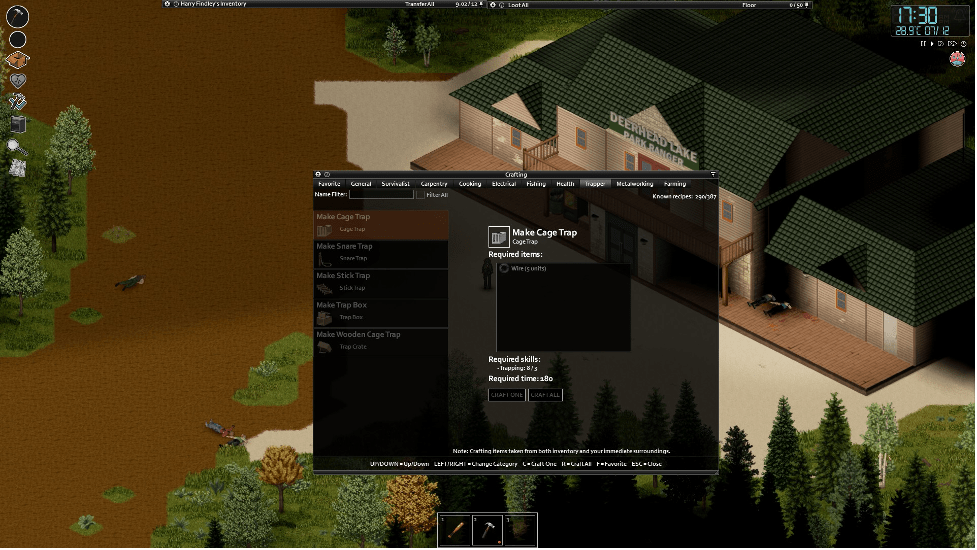
The first and most important part of trapping is the traps themselves. There are six in total, with each one being capable of trapping certain animals. They also have a unique level of reliability, with some breaking much quicker than others. If your trap breaks, so too will your hope of enjoying a meal.
Also Read: What To Do If You Get Bitten
To craft a trap, you first must learn the recipe. This can be done in four ways – through magazines, skill levels, professions, and traits. The quickest method by far is professions, with the Park Ranger profession will let you craft every trap from the start of the game, with a starting trapping skill level of two. In addition to this profession, you can pick two traits that give you recipes from the start. Hiker will give you the recipes for the Stick Trap, Snare Trap, and Wooden Crate Trap. Hunter will give you the recipes for every craftable trap in Project Zomboid. Both traits will give you an extra point in trapping.
Magazines are the second quickest method of learning trap recipes, though it isn’t nearly as reliable as picking Park Ranger as your profession. You’ll be relying heavily on RNG, with the right magazines being easy or difficult to find depending on your luck. You should keep an eye out for three magazines in particular, titled The Hunter Magazine Vol. 1, 2, and 3.
Each one will teach you specific trap recipes, giving you what you need to earn your stripes in trapping. For the best chance at finding what you need, regularly check mailboxes. They have the highest chance of spawning magazines, though they will spawn on bookshelves every now and then.
Also Read: Project Zomboid Farming Guide
The final method is to raise skills. Three traps are learned automatically upon reaching certain skill thresholds. Once you reach trapping level one, you will immediately be able to craft a Snare Trap. At three, you can craft a Cage Trap. With trapping level two and carpentry one, you can craft a Trap Box. The rest must be learned through magazines.
Once you’ve learned the trap recipes, all that’s left is gathering materials and learning how to put everything into practice.
Project Zomboid trapping: Setting your traps
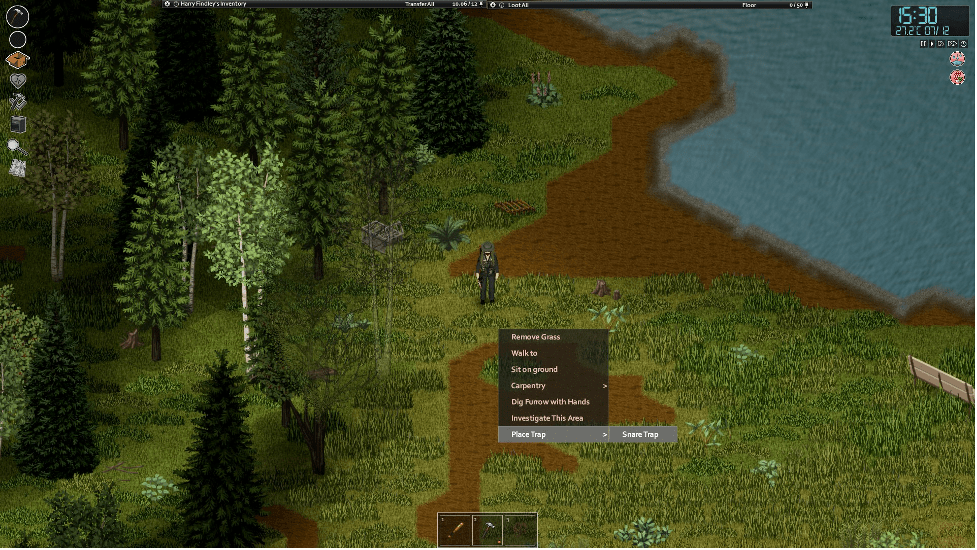
Once you get the basics, trapping is a fairly simple mechanic to master. On the surface, it’s as simple as crafting a trap, which doesn’t take much in the way of materials, and placing it down. Then all you need to do is drop some bait and visit it from time to time until you have your next meal. With this basic level of knowledge, you’ll get results pretty much anywhere, though it won’t be terribly reliable. If you want to become a true survivalist, you’ll need a deeper knowledge of trapping.
Project Zomboid trapping: Know your terrain
The first thing you should do to become a better trapper is to know your terrain. Certain animals prefer certain areas and times, so you need to know what likes where if you want a good diet. As it stands, there are five animals currently in Project Zomboid, each with its own set of preferences.
The first animals are mice and rats. They can be found primarily in farms, towns, and trailer parks, but rarely in the wilderness. They are active all day and night, capturable only by the sixth trap I have yet to mention – the mouse trap.
These traps cannot be crafted, but must be found on loot runs. They are fairly commonly found tucked away in offices, stores, and garages, placed where you’d expect to find a mouse trap. Storage rooms in these buildings seem to be best. Catching a mouse or rat will earn you some small animal meat, enough to make a light meal.
The next animal is the small bird. They can be found everywhere in Project Zomboid, though they are much less common than rats and mice. They are also active day and night, capturable using a Stick Trap. Small birds will also earn you some small bird meat.
Squirrels are the fourth animal, found primarily in dense forests. They can also be found less commonly in light forests and brush. Squirrels are only active at night, between the hours of 19:00 and 05:00. Squirrels can be caught with a variety of traps, excluding the Stick Trap and mouse trap. If caught, you’ll earn some small animal meat.
The last trappable animal as of Build 41 is rabbits. They are also found in the forests and are only active at night. Rabbits can be caught with the same traps as squirrels, and if you catch one, you’ll have really hit the jackpot. Rabbits have the highest amount of nutrients and can vary in size. Larger rabbits will give you more nutrients and remove more hunger, and vice-versa.
Also Read: Project Zomboid Infections – How To treat Illness & Injury
Project Zomboid trapping: Laying the bait
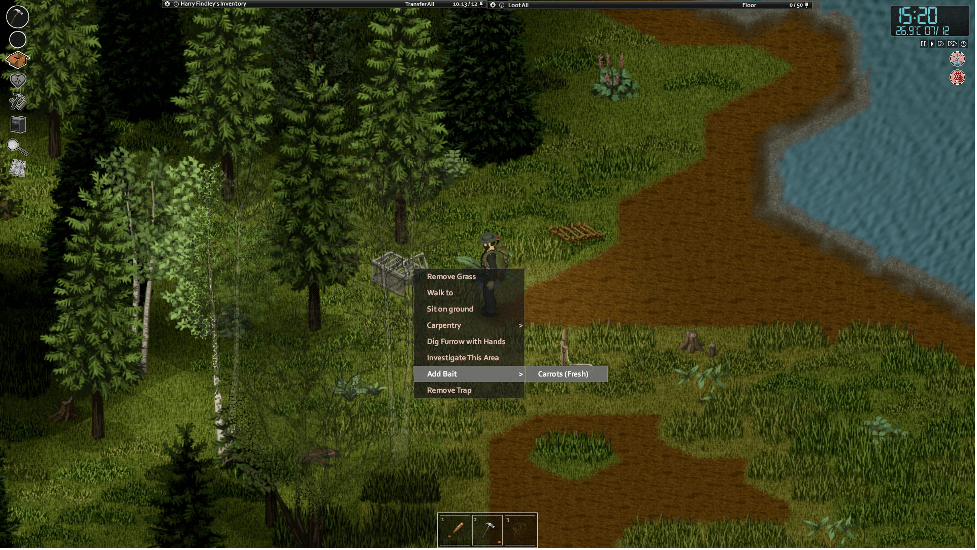
Just as the location impacts your chances of catching critters, so too does your choice of bait. Baiting your traps is simple, all you need is some fresh food in your inventory, then right-click your trap and lay the bait. Make sure you use something fresh though, as rotten food will never catch anything. If you want to catch something specific, keep these preferences in mind:
- Mice and rats – These little critters like exactly what you’d expect. Cheese, snacks, chocolate, fruits, and vegetables can give you a chance of catching a nice vermin dinner. For the highest chance, stick to the stereotypical cheese.
- Small birds – Bread and insects give you the highest chance of catching small birds, with cereal and corn having a slightly lower chance of attracting them.
- Squirrels – Squirrels like cereal and nut products best, including peanut butter. They also quite like popcorn, and can also be caught with some fruits and vegetables. Peaches and bell peppers have the lowest chances.
- Rabbits – Unsurprisingly, carrots are your best bet for catching rabbits. Most vegetables also have a lesser chance, as do some fruits, like apples and bananas.
To maximize your chances of catching a specific animal, you should couple the right bait with the right location. For bigger animals, make sure you use sturdier traps. Animals will struggle to escape your traps, so a well-built trap can make sure your meal sticks around until your next visit. The Cage Trap is the strongest, being made out of metal, and also carries the highest chance of catching rabbits and squirrels. Even still, you should check in every hour where possible, as trap “ticks” trigger once every hour.
The final two tips worth mentioning are distance and discretion. For animals to start sniffing around near your trap, you’ll need to be at least 75 tiles away. Having a specific trapping base away from your main is a good idea to make sure you aren’t scaring away your lunch. Second, keep your traps out of arm’s reach. Zombies will be attracted to traps with live animals inside, and will destroy them if given the chance. If you keep all these tips in mind, you’ll be well on your way to becoming a master trapper in Project Zomboid.
Project Zomboid trapping: Raising your skill
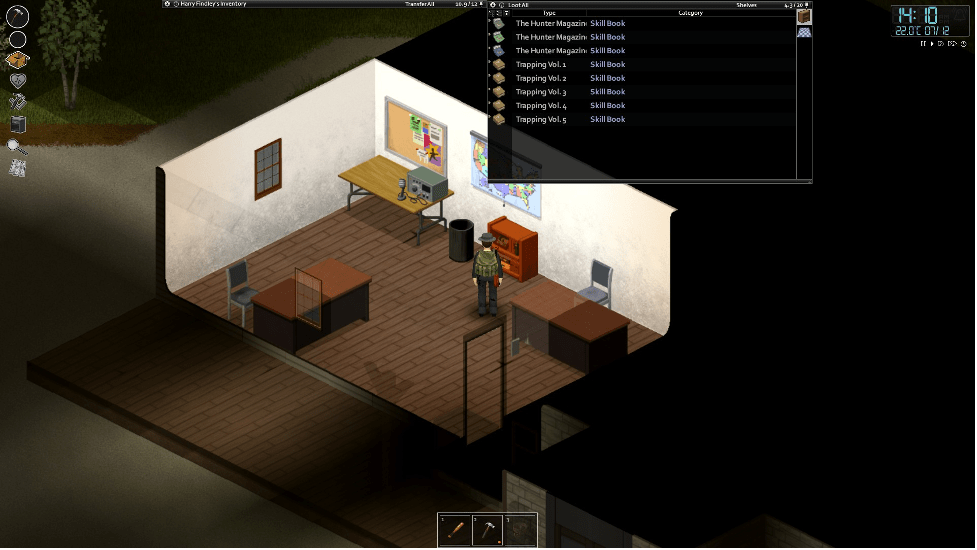
In Project Zomboid, practice is the quickest way to raise your trapping skill. Every time you remove an animal from your trap, you will gain some experience. The exact experience gained is based on the amount of hunger the animal would remove if eaten.
To efficiently grind the skill, you should read the trapping book most appropriate for your level, then focus on catching rabbits. Each book gives you a large experience multiplier, which can help you speed through the levels. Watching the survivalist show on T.V in the first seven days will also earn you a few levels, if you catch each broadcast.
That’s everything you need to know about trapping in Project Zomboid. With this skill, you’ll be able to safely live out your days in the wilderness, or nab some food to-go as you travel between towns. For more Project Zomboid info, check out our guide on how to survive the infamous helicopter event.
Frequently Asked Questions
Do Zombies Respawn In Project Zomboid?
The thing to understand about Project Zomboid is that there is no closure, and there are no happy endings. The game design encourages you to play until your character dies, either from thirst, starvation, or indeed a zombie bite.
As you cannot complete the game, there cannot be a finite number of zombies to do battle with and hide from, meaning the ones you kill will eventually respawn, an aspect of the game that some players find dissatisfying despite its architectural importance.
The good news is that if you fall into this disgruntled gamer category, you can simply turn off respawning on sandbox mode and go on your zombie killing spree comforted by the knowledge that, this time… they’ll stay dead.
Do bear in mind though, that zombies will migrate to your spot from other cells, so you will never be truly zombie-free unless you kill all the zombies everywhere — Challenge accepted?
Will Project Zomboid Have NPCs?
Non-player characters certainly add a little extra interaction to video games, and while as of yet there are no NPCs in Project Zomboid, they are on their way. Developer The Indie Stone has confirmed that NPCs are set to be added to the exciting multiplayer game. And they won’t be like any average non-player character either.
The goal is to have complex and individualized stories for each character that you will encounter. When the addition does arrive don’t expect to find these characters in typical hold-up areas such as fortresses or houses because they will be making their way around the world progressing toward their own personal goals. And if you want to learn more about those goals you’ll want to head to the campfire where these characters will be able to relate their stories to you.
These complex characters are set to arrive on your screen during update 43.
How Long Is 1 Day In Zomboid?
Nighttime isn’t just scary in Project Zomboid; you can barely see a thing, which makes scavenging after dark a pretty bad idea. Granted, there are benefits to striking out in the dead of night. For one, zombies can’t see you as well, but as your vision is also limited, the chances of running right into an ambush are pretty high. As such, you’ll want to make the daylight hours count, and this period translates in real-time as an hour exactly.
Each 24-hour period in project Zomboid unfolds over the course of 2 real-life hours, so once that virtual sun sets, you’ll have to brave it out for another hour before you can head out and start searching for resources again. This means that every in-game hour plays out over 5 minutes of actual time.
But bear in mind that these are just the default settings. Day length is actually variable, determined by the server settings, so if you wanted a different temporal experience, it’s certainly a possibility.

















